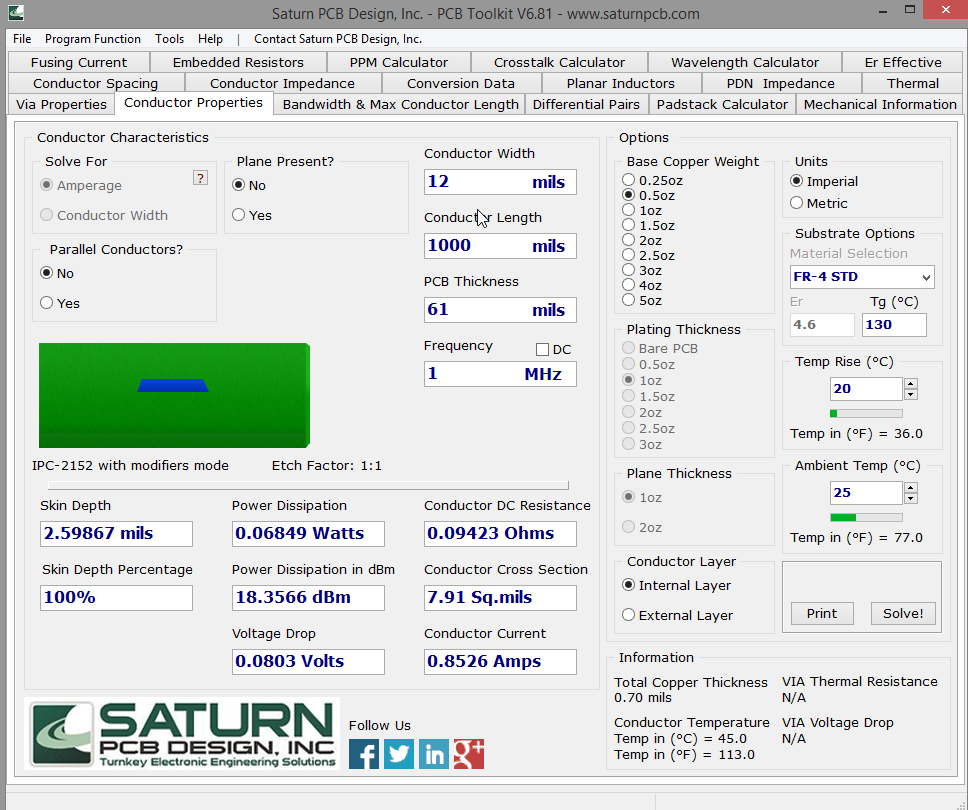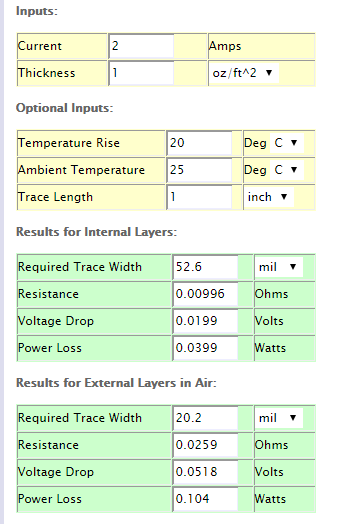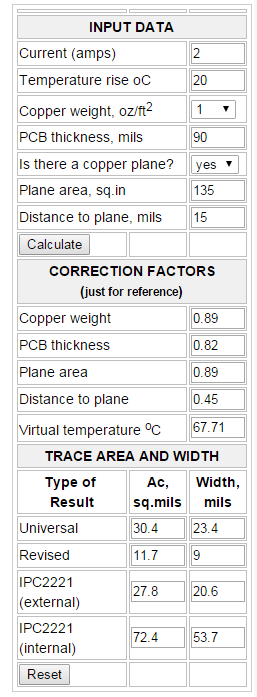Similar questions and topics have been asked before such as
- Standard PCB trace widths?
- Formula for voltage drop vs PCB trace width, temperature, current, and trace length
I've used PCB Toolkit in the past and I haven't had practical issues, but I also didn't have more than 1A running through signal traces before. What I'm noticing is that there is a difference between some of the calculators. I'd like to know which set of tools is more trusted.
I understand that there are alot of pictures with information all over the pictures, you can skip to the bottom of this question for a summary of the pictures show if that is easier.
PCB Toolkit
With IPC-2152 modifiers enabled

The general window looks like this

I've played around with the conductor width until I was able to ~2A. My input settings are the following

I believe my fab house starts with 0.5oz base and then plates up.
Here are the results for external layer

Internal layer (I've updated my conductor width to 22 mils)

If I were to change the option from plane present to no plane present, I get a different set of values.
Keeping the settings for the external layer the same, and changing only plane present: no


With IPC-2152 without modifiers enabled


From a question I had asked earlier, Will forced air on PCB improve current capacity of trace? , which seems to indicate that heat dissipation improves current limits, then the presence of the plane helps with cooling and therefore can handle higher currents than without.
CircuitCalculator.com : PCB Trace Width Calculatr
I would have expected that the values to have been similar between the two, but they really are not.
If I were to enter the same values I had entered for the PCB Toolkit (with the exception of the plane present status and base copper and plating copper. I get the following

**Summary**
The following all has a target current of ~2A with a 20C temp rise.
PCB Toolkit with IPC-2152 modifiers Internal Trace 22 mils
PCB Toolkit with IPC-2152 without modifiers Internal Trace 55 mils
Circuit Calculator Internal Trace 52.6 mils
PCB Toolkit with IPC-2152 modifiers External Trace 12 mils
PCB Toolkit with IPC-2152 without modifiers External Trace 36 mils
Circuit Calculator External Trace 20.2 mils
So my question is, which is correct because I am also trying to maintain a 50 ohm line if possible ? I'm leaning towards that PCB Toolkit is more accurate, since the online calculator is using IPC-2221A and the website does not appear to have been updated since March 2008 (last blog entry).
In the end, what I am looking for is a smallest external/trace, that can handle 2A without being excessive on copper thickness. Smaller traces make it easier to get 50 ohm line without having to increasing my board thickness.


